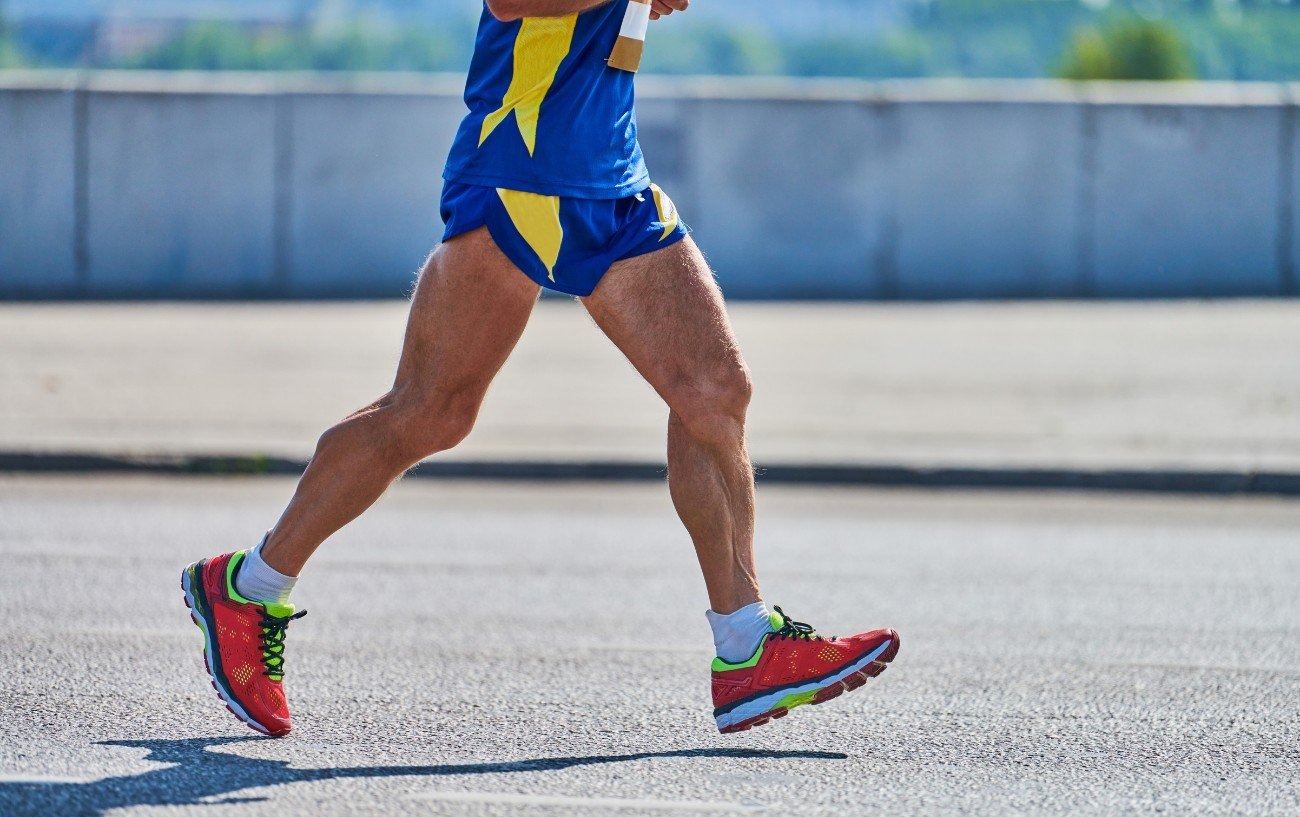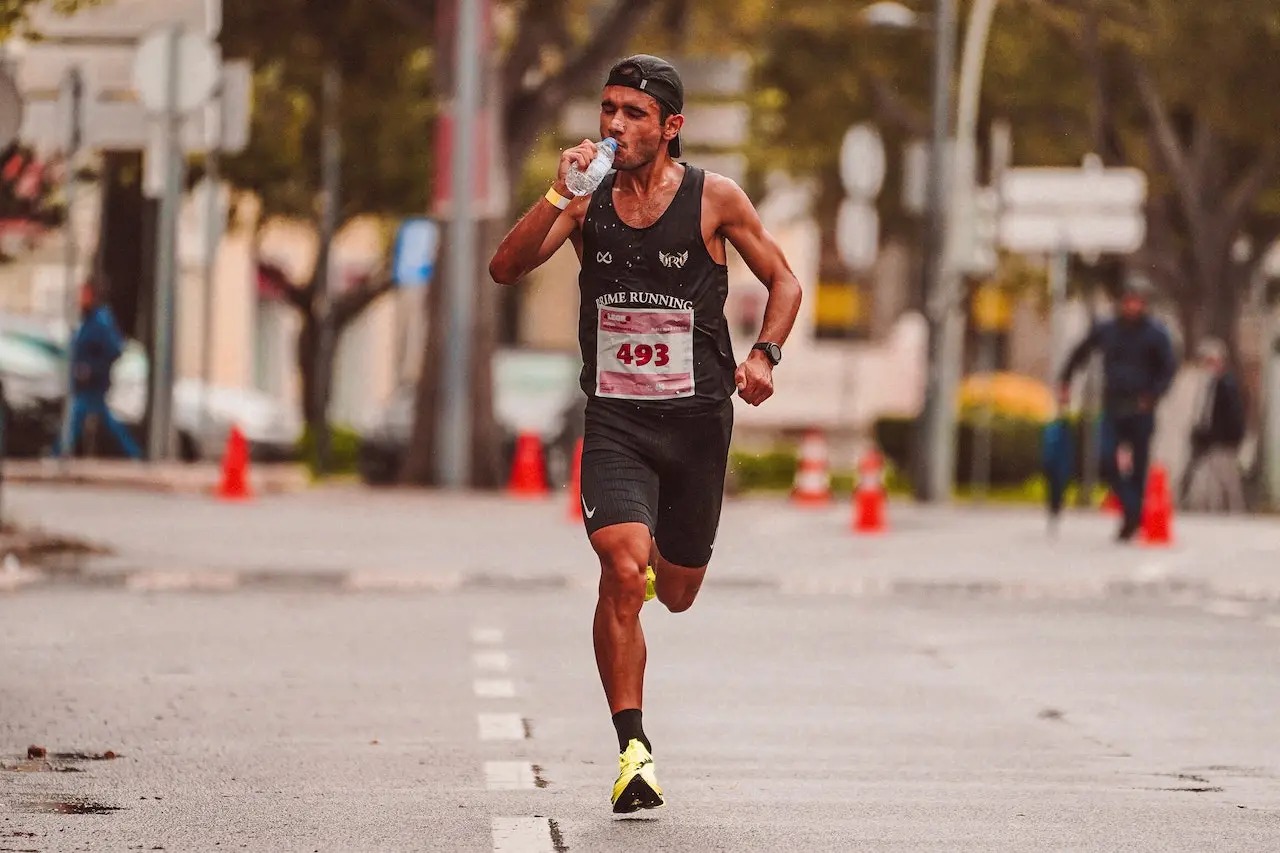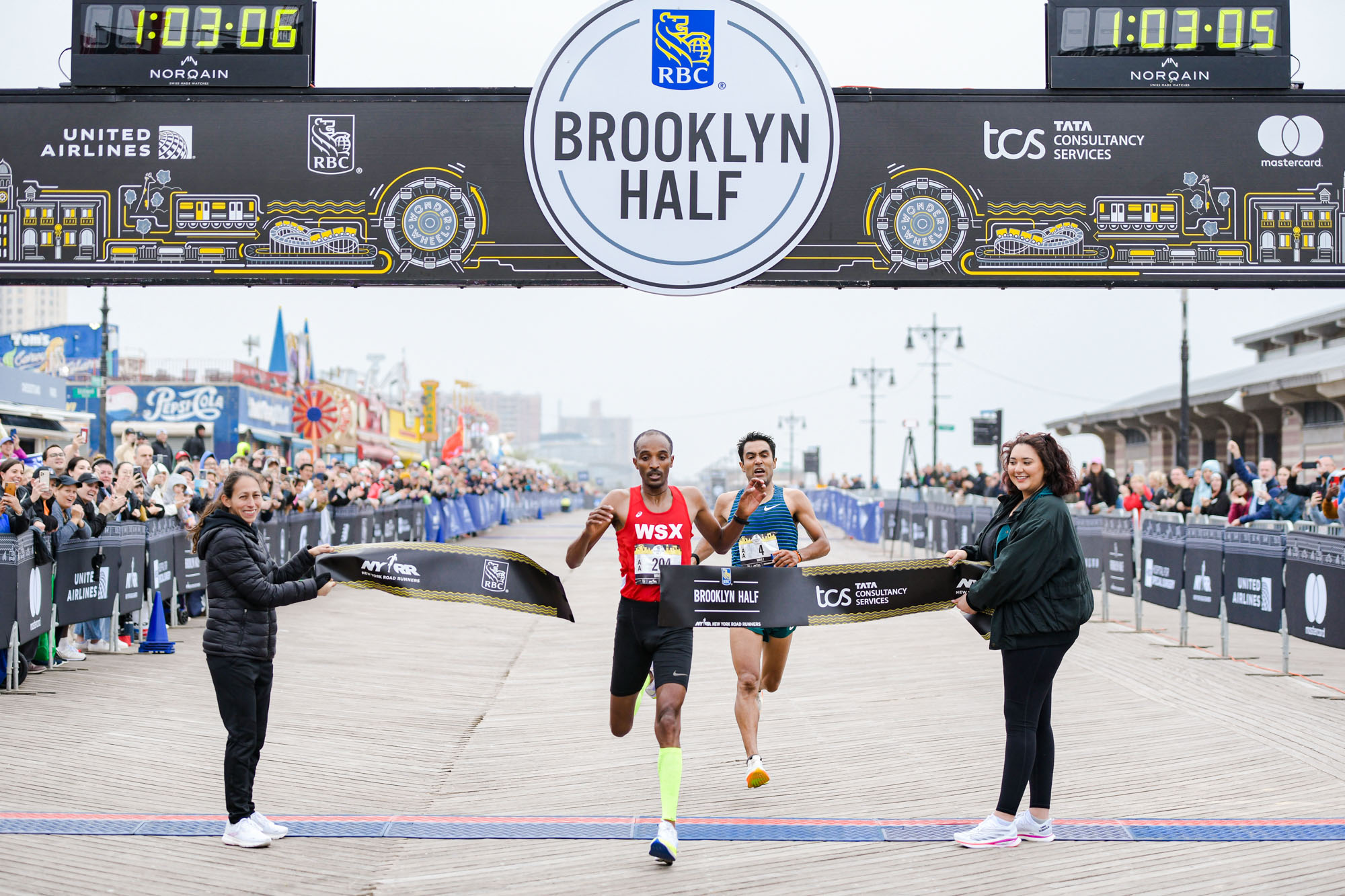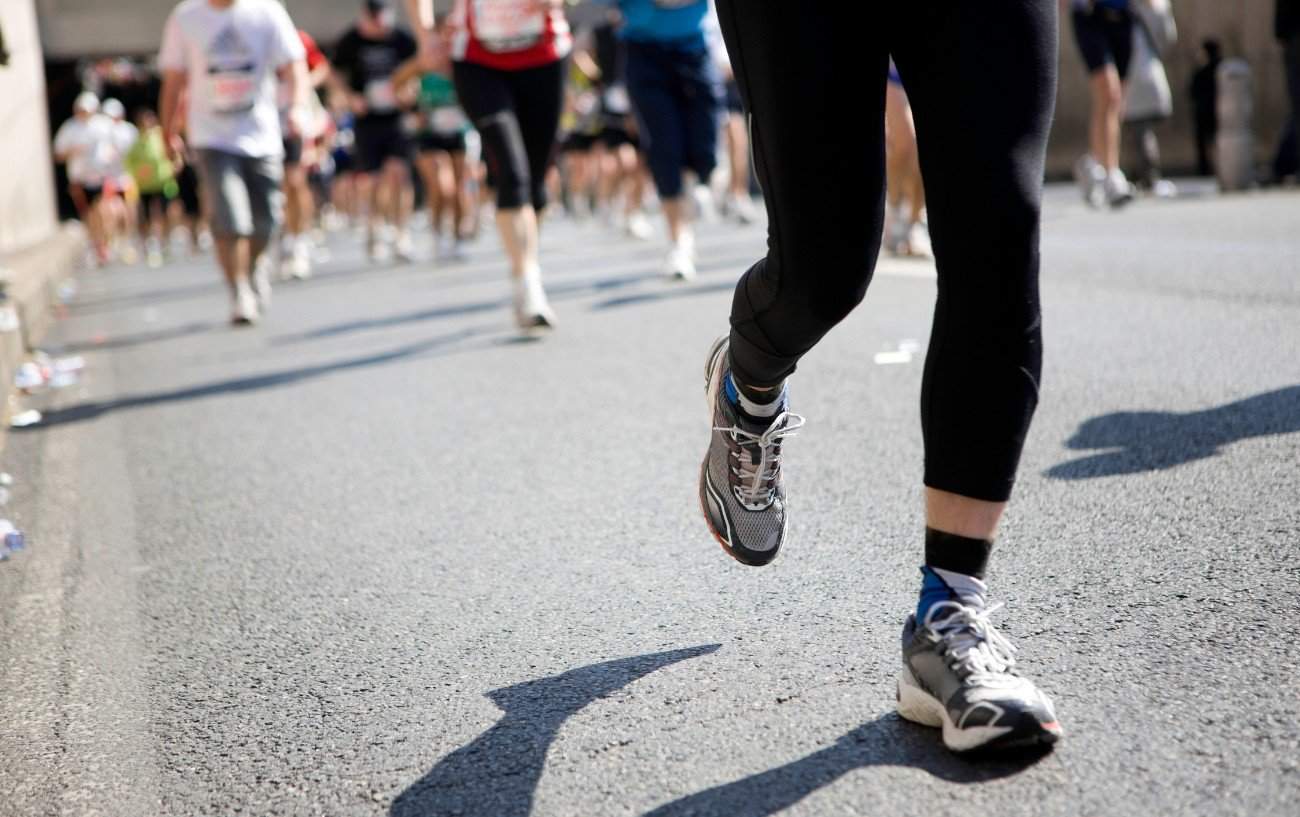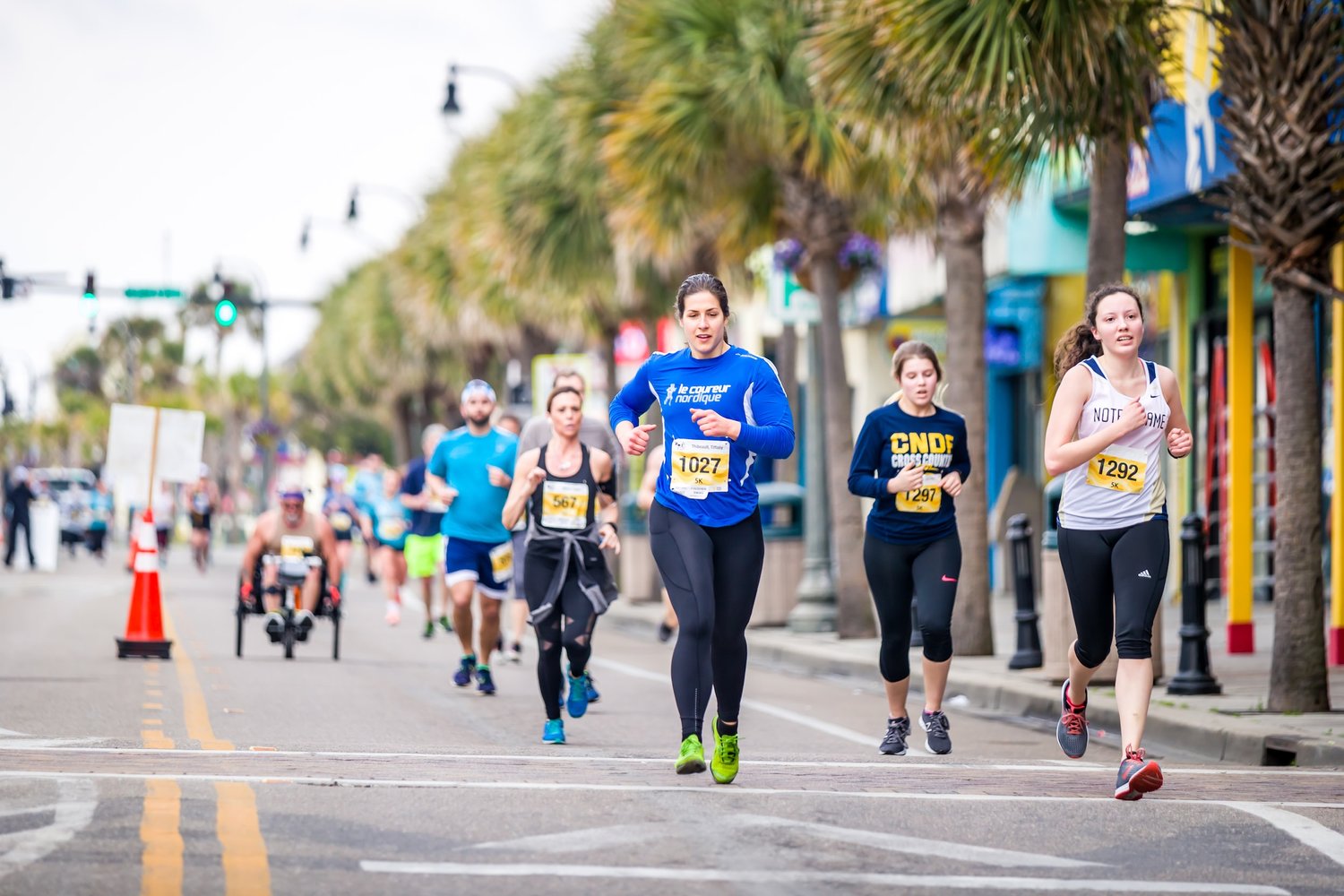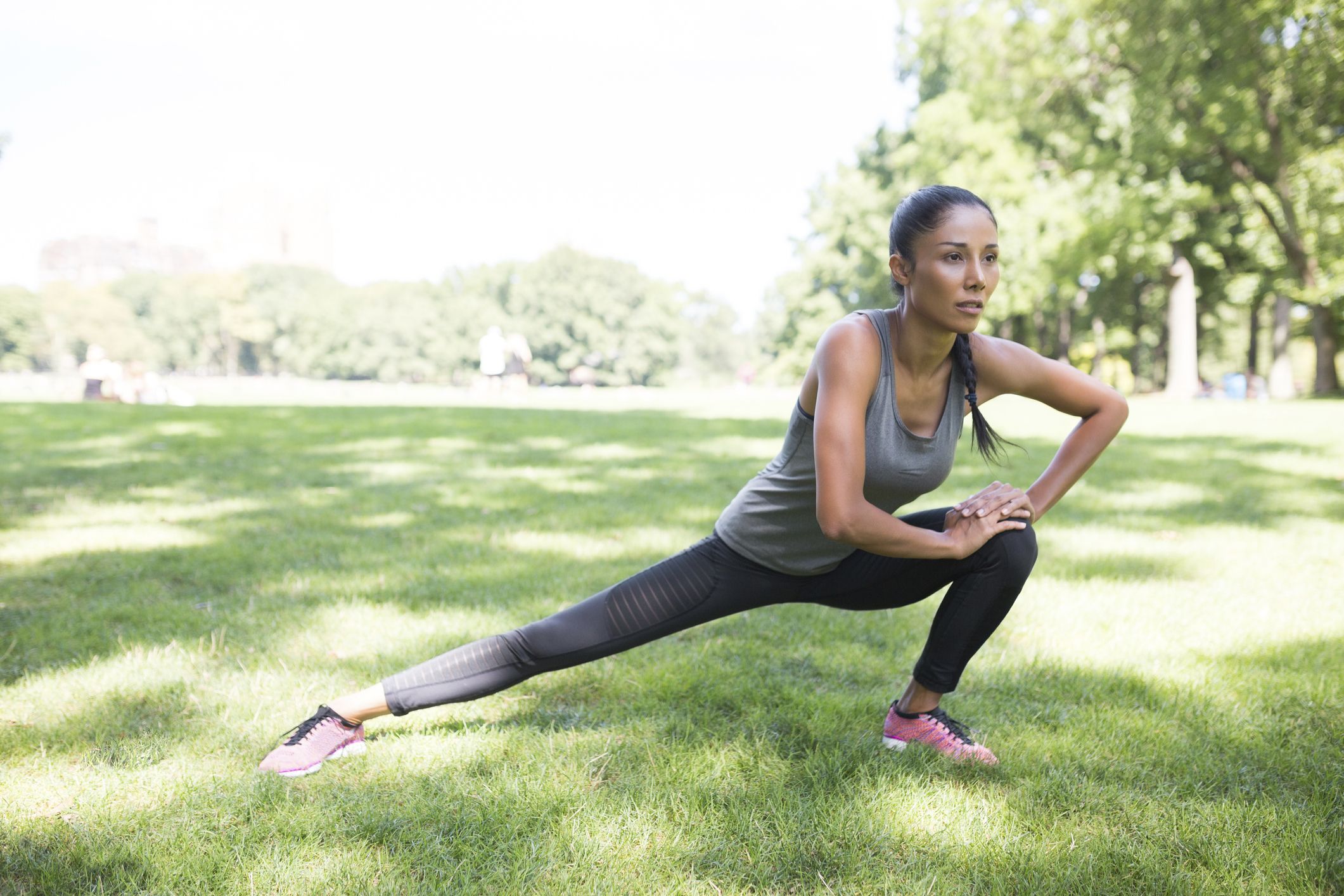

Featured
How To Warm Up Before Half Marathon
Modified: August 19, 2023
Get ready for your half marathon with these essential warm-up tips and techniques. Featured advice to help you maximize your performance and prevent injuries.
Introduction
Preparing for a half marathon is an exciting endeavor, but it also requires careful planning and preparation to ensure a successful race day. One crucial aspect of marathon training that should never be overlooked is the warm-up. The warm-up is an essential part of any running routine as it helps to prepare your body for the physical demands of the race ahead.
Warming up before a half marathon not only helps to prevent injuries but also improves performance by increasing blood flow to your muscles, enhancing range of motion, and mentally preparing you for the challenge ahead. It is a critical step in activating your muscles and joints, loosening tight areas, and getting your body ready to perform at its best.
In this article, we will explore the importance of warming up before a half marathon and provide you with a comprehensive guide on how to properly warm up for your race. We will cover general guidelines for warm-up, dynamic stretching exercises, foam rolling techniques, activation drills, and provide you with a warm-up routine specifically tailored for a half marathon.
By incorporating these warm-up techniques into your pre-race routine, you can optimize your performance, reduce the risk of injuries, and ensure an enjoyable race day experience. So, let’s dive in and discover the best ways to warm up before a half marathon!
Importance of Warming Up before a Half Marathon
Warming up before a half marathon is not just a suggestion but a vital component of a successful race. It prepares your body physically, mentally, and emotionally for the grueling distance ahead. Let’s delve into the key reasons why warming up is so crucial:
1. Injury Prevention: Engaging in a proper warm-up routine helps to reduce the risk of injuries during your race. It increases circulation, warms up your muscles, and improves flexibility, making them less prone to strains, sprains, and tears. Additionally, it prepares your tendons, ligaments, and joints for the impact they will endure during the run.
2. Enhanced Performance: Warming up primes your body for peak performance. It increases blood flow and oxygen delivery to your muscles, allowing them to work more efficiently. This improved circulation enhances muscle elasticity and range of motion, leading to better running mechanics and overall performance.
3. Mental Preparation: Warming up not only has physical benefits but also plays a vital role in mental preparation. It gives you the opportunity to focus your mind on the upcoming race, visualize success, and mentally prepare for the challenge ahead. By going through a warm-up routine, you can shift your mindset into race mode, boosting confidence and reducing pre-race jitters.
4. Hormonal Response: When you warm up, your body releases hormones, such as adrenaline, endorphins, and cortisol, which elevate your heart rate and activate your muscles. These hormones help to increase alertness, energy levels, and focus, making you more ready to tackle the half marathon.
5. Injury Detection: While warming up, you have the chance to identify any potential issues or discomfort in your body. Paying attention to how your muscles feel during the warm-up can help you address any underlying problems and make necessary adjustments before the race. This awareness can prevent exacerbating minor issues into serious injuries during the run.
6. Establishing Routine: Incorporating a warm-up routine into your training regimen helps create consistency. By making it a habit before every run, including race day, you establish a routine that signals to your body and mind that it’s time to perform. A familiar warm-up routine can provide a sense of comfort and familiarity, boosting mental focus and overall race-day performance.
Overall, warming up before a half marathon is essential to optimize your performance, prevent injuries, and mentally prepare for the race. It sets the foundation for success and ensures that you start the race in the best possible condition. Now that you understand the importance of warming up, let’s explore the general guidelines for an effective warm-up routine.
General Guidelines for Warm-up
To ensure an effective warm-up before a half marathon, it is important to follow these general guidelines:
- Allow Sufficient Time: Allocate around 10 to 15 minutes for your warm-up routine. This timeframe allows for loosening tight muscles and increasing your heart rate without exhausting your energy reserves.
- Start with Light Cardiovascular Exercise: Begin your warm-up with light cardiovascular activities such as jogging or brisk walking. This elevates your heart rate, increases blood flow, and raises your body temperature.
- Incorporate Dynamic Stretching: Dynamic stretching involves moving your joints through a controlled range of motion. It helps to improve flexibility, mobility, and prepare your muscles for the upcoming exertion. Focus on dynamic stretches that target your lower body, such as leg swings, walking lunges, and high knees.
- Include Activation Drills: Activation drills are exercises designed to activate specific muscle groups used in running. Examples include butt kicks, skipping, and lateral lunges. These drills help to engage the muscles and prime your body for efficient running mechanics.
- Perform Foam Rolling: Incorporate foam rolling techniques to release tension in your muscles and alleviate any tightness. By using a foam roller on areas like your calves, quads, and IT band, you can improve flexibility and mobility, enhancing your overall performance.
- Gradually Increase Intensity: As you progress through your warm-up routine, gradually increase the intensity to mimic the demands of the half marathon. For instance, you can progress from light jogging to striding or perform faster-paced drills.
- Maintain Proper Hydration: Ensure that you are properly hydrated before starting your warm-up. Drink water or a sports drink to replenish any fluids lost during the preparation process.
- Listen to Your Body: Pay attention to how your body feels during the warm-up. If you experience any pain or discomfort, adjust or modify the exercises accordingly. It’s crucial to strike a balance between pushing yourself and avoiding overexertion or injury.
By following these general guidelines, you can effectively prepare your body for the demands of a half marathon. Remember, warming up is a personal process, so feel free to adjust the routine to suit your specific needs. Now, let’s dive into the specific warm-up exercises you can incorporate into your routine.
Dynamic Stretching Exercises
Dynamic stretching is a crucial component of a comprehensive warm-up routine before a half marathon. Unlike static stretching, where you hold a stretch for a prolonged period, dynamic stretching involves active movements that stretch your muscles and increase your range of motion. Here are some dynamic stretching exercises to incorporate into your warm-up:
- Leg Swings: Stand next to a wall or a sturdy support. Swing one leg forward and backward, keeping it straight, making controlled movements. Repeat for 10-15 swings on each leg to stretch your hamstrings, quadriceps, and hip flexors.
- Walking Lunges: Take a step forward with your right leg and lower your body into a lunge position. Push off your right foot, bringing your left leg forward into another lunge. Continue this walking motion for about 10-15 lunges to warm up your hip flexors, glutes, and quadriceps.
- High Knees: Stand tall with your feet hip-width apart. Lift your right knee towards your chest while driving your left arm forward. Alternate legs while maintaining a quick pace, aiming to lift your knees as high as possible. Perform 10-15 high knees on each leg to engage your hip flexors, quads, and increase overall mobility.
- Butt Kicks: Stand upright with your feet hip-width apart. Jog in place while focusing on kicking your heels up towards your buttocks. This exercise targets your quadriceps and hip flexors. Perform 10-15 repetitions to increase flexibility and loosen up your lower body.
- Walking Knee Hugs: Step forward with your right leg and raise your left knee towards your chest, hugging it with both hands. Lower your left leg and take another step, repeating the motion with your right knee. This exercise targets your glutes, hip flexors, and hamstrings. Repeat for 10-15 knee hugs on each leg.
- Lateral Leg Swings: Stand next to a wall or a sturdy support. Swing one leg from side to side across your body, keeping it straight, with controlled movements. Repeat for 10-15 swings on each leg to stretch your adductors, abductors, and hip flexors.
Remember to perform each dynamic stretch in a smooth and controlled manner, gradually increasing the range of motion. These exercises not only help warm up and stretch your muscles but also elevate your heart rate and get your body ready for the physical demands of the race.
Now that we have covered dynamic stretching exercises, let’s move on to another critical component of the warm-up routine – foam rolling.
Foam Rolling Techniques
Foam rolling is a self-myofascial release technique that uses a foam roller to apply pressure to specific areas of your muscles, aiding in muscle recovery, flexibility, and injury prevention. Incorporating foam rolling into your warm-up routine before a half marathon can help release muscle tension and improve overall performance. Here are some foam rolling techniques to try:
- Calf Roll: Sit on the floor with your legs extended. Position the foam roller under your calves. Using your hands for support, lift your hips off the ground and roll the foam roller up and down your calves. Repeat for 30-60 seconds, focusing on any tight spots.
- Quadriceps Roll: Lie facedown with the foam roller positioned under your thighs. Prop yourself up on your forearms and slowly roll along the front of your thighs, from above the knee to your hip. Spend extra time on any tender areas. Repeat for 30-60 seconds.
- IT Band Roll: Lie on your side with the foam roller positioned underneath your hip. Place the opposite leg in front of you for support. Using your forearm, roll along the outside of your thigh, from your hip to just above the knee. Roll back and forth for 30-60 seconds, targeting the IT band.
- Glute Roll: Sit on the foam roller with your feet flat on the floor and knees bent. Lean slightly to one side and cross one ankle over the opposite knee. Roll back and forth, targeting the glute area. Spend extra time on any tight areas. Repeat on the other side for 30-60 seconds.
- Hamstring Roll: Sit on the floor with your legs extended and the foam roller positioned under your thighs. Place your hands behind you for support and slowly roll back and forth along the back of your thighs. Focus on any areas of tightness for 30-60 seconds.
- Upper Back Roll: Lie on your back with the foam roller positioned horizontally across your upper back. Bend your knees and place your feet flat on the ground. Cross your arms over your chest or place them behind your head. Use your feet to lift your hips off the ground and roll along your upper back. Repeat for 30-60 seconds.
When foam rolling, remember to maintain slow and controlled movements. If you come across a particularly tender spot, pause and apply gentle pressure until the discomfort subsides. Foam rolling may feel slightly uncomfortable at first, but it should not be painful. If you experience sharp or lasting pain, stop the rolling in that area.
Incorporating foam rolling into your warm-up routine can help increase blood circulation, loosen up tight muscles, and improve overall flexibility. Now that you’ve learned about foam rolling, let’s move on to the next component of the warm-up – activation drills.
Activation Drills
Activation drills are exercises specifically designed to activate and engage specific muscle groups used during running, helping to improve muscle recruitment and prepare your body for the physical demands of a half marathon. By incorporating activation drills into your warm-up routine, you can enhance your performance and reduce the risk of injury. Here are some activation drills to include:
- Butt Kicks: Jog in place while focusing on kicking your heels up towards your buttocks. This exercise activates your hamstrings and helps improve your running stride.
- High Knees: Stand tall with your feet hip-width apart. Lift your knees towards your chest while driving your opposite arm forward. This drill targets your hip flexors and activates the muscles in your lower body.
- Lateral Band Walks: Place a resistance band just above your ankles. Take small lateral steps, maintaining tension in the band. This exercise activates your glutes and outer thigh muscles, improving hip stability and preventing injuries.
- A-Skips: While jogging, perform a skipping motion, driving your knee up towards your chest while extending the opposite arm forward. Alternate legs as you skip. A-skips help activate the muscles in your hip flexors and quadriceps.
- Single-Leg Balance: Stand on one leg, maintaining your balance. This drill activates the stabilizing muscles in your foot, ankle, and lower leg, which are essential for proper running mechanics.
- Marching Glute Bridge: Lie on your back with your knees bent and feet flat on the ground. Lift your hips off the ground into a bridge position. While holding the bridge, alternate lifting one leg at a time, engaging your glutes and hamstrings.
Perform each activation drill for around 30 seconds to a minute, focusing on proper form and engaging the targeted muscles. These drills help activate and warm up specific muscle groups, ensuring optimal muscle recruitment and enhancing your running performance. Incorporating activation drills into your warm-up can make a significant difference in your race-day experience.
Now that you’re familiar with activation drills, it’s time to put everything together and create a warm-up routine specifically tailored for a half marathon.
Warm-up Routine for a Half Marathon
To prepare your body for a half marathon, it is essential to follow a structured warm-up routine that incorporates various components, including cardiovascular exercises, dynamic stretching, foam rolling, and activation drills. Here is a suggested warm-up routine to get you ready for your race:
- Light Jogging: Begin your warm-up with a 5-10 minute light jog to elevate your heart rate and increase blood flow to your muscles. This helps to warm up your entire body and prepare it for more vigorous activity.
- Dynamic Stretching: Perform dynamic stretching exercises such as leg swings, walking lunges, high knees, butt kicks, walking knee hugs, and lateral leg swings. Aim to perform each exercise for 10-15 repetitions to improve mobility and flexibility.
- Foam Rolling: Spend a few minutes foam rolling key areas such as your calves, quadriceps, IT band, glutes, and hamstrings. Apply moderate pressure and focus on any tight spots, rolling back and forth for 30-60 seconds on each area.
- Activation Drills: Engage in activation drills to activate specific muscle groups used during running. Include exercises like butt kicks, high knees, lateral band walks, A-skips, single-leg balance, and marching glute bridge. Perform each drill for 30 seconds to a minute, focusing on proper form and muscle activation.
- Strides: Finish your warm-up routine with a few strides, which are short bursts of running at a faster pace. Accelerate gradually to a near-sprint speed for about 50-100 meters, then gradually slow down. Repeat this 3-4 times to prime your muscles for the intensity of the race.
Remember to listen to your body and make any necessary modifications or adjustments based on your individual needs and preferences. It’s important to find a warm-up routine that works best for you and helps you feel prepared and energized for your half marathon.
Incorporating this warm-up routine into your race-day preparation will help optimize your performance, reduce the risk of injuries, and mentally prepare you for the challenge ahead. By following a consistent warm-up routine, you set yourself up for a successful half marathon experience.
Now that you have a warm-up routine in place, let’s explore the importance of cooling down after the run.
Cooling Down after the Run
After completing a half marathon, it’s important to dedicate time to properly cool down and allow your body to recover. Cooling down helps your body transition from a high-intensity state to a state of rest, promoting efficient recovery and reducing post-race discomfort. Here are some key components to include in your post-run cool-down:
- Slow Jog or Walk: Begin by slowly reducing your running pace to a relaxed jog or walk. This gradual decrease in intensity helps to gradually bring your heart rate down and prevent blood pooling in your lower extremities.
- Static Stretching: Engage in static stretches targeting the major muscle groups used during the half marathon. Focus on areas like your calves, quadriceps, hamstrings, hip flexors, and glutes. Hold each stretch for 20-30 seconds, breathing deeply and allowing the muscles to relax.
- Hydrate: Replenish your fluids by drinking water or a sports drink. Proper hydration is important for restoring electrolyte balance and aiding in the recovery process after a long-distance run.
- Use a Foam Roller: Spend some time foam rolling your muscles, focusing on any tight or sore areas. This can help release tension and promote circulation, aiding in muscle recovery and reducing post-run muscle soreness.
- Replenish with Nutrition: Eat a balanced meal or snack containing carbohydrates, protein, and healthy fats within 30-60 minutes after your run. This provides your body with the necessary nutrients to replenish glycogen stores and aid in muscle repair.
- Reflect and Celebrate: Use the cool-down period as a time for reflection and celebration of your accomplishment. Acknowledge your hard work, determination, and the progress you have made in your running journey. Take a moment to appreciate your body’s capabilities and the joy of completing the half marathon.
A proper cooldown routine helps your body transition from the intense physical exertion of a half marathon to a state of rest and recovery. It allows your heart rate, breathing, and body temperature to gradually return to normal levels, preventing dizziness and aiding in the recovery process.
Remember, cooling down is an important part of your overall training program. It helps optimize your recovery, reduces muscle soreness, and prepares your body for future training sessions. Make cooling down a regular practice after your runs to facilitate a smooth and effective post-race recovery.
Now that we’ve covered the importance of cooling down, let’s summarize the key points covered in this article.
Conclusion
Warming up before a half marathon is a vital step in preparing your body physically, mentally, and emotionally for the race. It helps prevent injuries, enhances performance, and mentally prepares you for the challenge ahead. By following a well-rounded warm-up routine, you can optimize your performance, reduce the risk of injuries, and ensure an enjoyable race day experience.
Start your warm-up with light cardiovascular exercise to increase your heart rate and warm up your muscles. Incorporate dynamic stretching exercises to improve flexibility and range of motion. Use a foam roller to release muscle tension and alleviate tightness. Engage in activation drills to activate specific muscle groups used in running. Finish off your warm-up routine with a few strides to prime your muscles for the intensity of the race.
After completing the half marathon, taking the time to cool down is equally important. It allows your body to transition from a high-intensity state to a restful state, promoting efficient recovery and reducing post-race discomfort. Include components such as a slow jog or walk, static stretching, hydration, foam rolling, and replenishing your body with proper nutrition.
By prioritizing both the warm-up and cool-down phases, you can optimize your performance, prevent injuries, and enhance your overall running experience. Remember to listen to your body, adjust the warm-up and cool-down routine to fit your needs, and celebrate the progress you’ve made in your running journey.
So lace up your running shoes, incorporate these warm-up and cool-down practices into your half marathon training regimen, and get ready to conquer the race with confidence and enthusiasm!



